阿难。彼善男子。修三摩提。想阴尽者。是人平常梦想销灭。寤寐恒一。觉明虚静。犹如晴空。无复粗重前尘影事。观诸世间大地河山。如镜鉴明。来无所粘。过无踪迹。虚受照应。了罔陈习。惟一精真。生灭根元。从此披露。见诸十方十二众生。毕殚其类。虽未通其各命由绪。见同生基。犹如野马。熠熠清扰。为浮根尘。究竟枢穴。此则名为。行阴区宇。若此清扰熠熠元性。性入元澄。一澄元习。如波澜灭。化为澄水。名行阴尽。是人则能超众生浊。观其所由。幽隐妄想以为其本。
阿难。当知是得正知奢摩他中。诸善男子。凝明正心。十类天魔。不得其便。方得精研。穷生类本。于本类中生元露者。观彼幽清。圆扰动元。于圆元中。起计度者。是人坠入二无因论。一者。是人见本无因。何以故。是人既得生机全破。乘于眼根八百功德。见八万劫所有众生。业流湾环。死此生彼。只见众生轮回其处。八万劫外。冥无所观。便作是解。此等世间十方众生。八万劫来。无因自有。由此计度。亡正遍知。堕落外道。惑菩提性。二者。是人见末无因。何以故。是人于生既见其根。知人生人。悟鸟生鸟。乌从来黑。鹄从来白。人天本竖。畜生本横。白非洗成。黑非染造。从八万劫。无复改移。今尽此形。亦复如是。而我本来不见菩提。云何更有成菩提事。当知今日一切物象。皆本无因。由此计度。亡正遍知。堕落外道。惑菩提性。是则名为。第一外道。立无因论。
阿难。是三摩中。诸善男子。凝明正心。魔不得便。穷生类本。观彼幽清。常扰动元。于圆常中。起计度者。是人坠入四遍常论。一者。是人穷心境性。二处无因。修习能知。二万劫中。十方众生。所有生灭。咸皆循环。不曾散失。计以为常。二者。是人穷四大元。四性常住。修习能知。四万劫中。十方众生。所有生灭。咸皆体恒。不曾散失。计以为常。三者。是人穷尽六根。末那执受。心意识中。本元由处。性常恒故。修习能知。八万劫中。一切众生。循环不失。本来常住。穷不失性。计以为常。四者。是人既尽想元。生理更无流止运转。生灭想心。今已永灭。理中自然成不生灭。因心所度。计以为常。由此计常。亡正遍知。堕落外道。惑菩提性。是则名为。第二外道。立圆常论。
又三摩中。诸善男子。坚凝正心。魔不得便。穷生类本。观彼幽清。常扰动元。于自他中。起计度者。是人坠入四颠倒见。一分无常。一分常论。一者。是人观妙明心。遍十方界。湛然以为究竟神我。从是则计我遍十方。凝明不动。一切众生。于我心中自生自死。则我心性。名之为常。彼生灭者。真无常性。二者。是人不观其心。遍观十方恒沙国土。见劫坏处。名为究竟无常种性。劫不坏处。名究竟常。三者。是人别观我心。精细微密。犹如微尘。流转十方。性无移改。能令此身即生即灭。其不坏性。名我性常。一切死生从我流出。名无常性。四者。是人知想阴尽。见行阴流。行阴常流。计为常性。色受想等。今已灭尽。名为无常。由此计度。一分无常一分常故。堕落外道。惑菩提性。是则名为。第三外道。一分常论。
又三摩中。诸善男子。坚凝正心。魔不得便。穷生类本。观彼幽清。常扰动元。于分位中。生计度者。是人坠入四有边论。一者。是人心计生元。流用不息。计过未者。名为有边。计相续心。名为无边。二者。是人观八万劫。则见众生八万劫前。寂无闻见。无闻见处。名为无边。有众生处。名为有边。三者。是人计我遍知。得无边性。彼一切人现我知中。我曾不知彼之知性。名彼不得无边之心。但有边性。四者。是人穷行阴空。以其所见。心路筹度。一切众生一身之中。计其咸皆半生半灭。明其世界一切所有。一半有边。一半无边。由此计度。有边无边。堕落外道。惑菩提性。是则名为。第四外道。立有边论。
又三摩中。诸善男子。坚凝正心。魔不得便。穷生类本。观彼幽清。常扰动元。于知见中。生计度者。是人坠入四种颠倒。不死矫乱。遍计虚论。一者。是人观变化元。见迁流处。名之为变。见相续处。名之为恒。见所见处。名之为生。不见见处。名之为灭。相续之因。性不断处。名之为增。正相续中。中所离处。名之为减。各各生处。名之为有。互互亡处。名之为无。以理都观。用心别见。有求法人。来问其义。答言。我今亦生亦灭。亦有亦无。亦增亦减。于一切时。皆乱其语。令彼前人遗失章句。二者。是人谛观其心。互互无处。因无得证。有人来问。惟答一字。但言其无。除无之余。无所言说。三者。是人谛观其心。各各有处。因有得证。有人来问。惟答一字。但言其是。除是之余。无所言说。四者。是人有无俱见。其境枝故。其心亦乱。有人来问。答言。亦有即是亦无。亦无之中。不是亦有。一切矫乱。无容穷诘。由此计度。矫乱虚无。堕落外道。惑菩提性。是则名为。第五外道。四颠倒性。不死矫乱。遍计虚论。
又三摩中。诸善男子。坚凝正心。魔不得便。穷生类本。观彼幽清。常扰动元。于无尽流。生计度者。是人坠入死后有相。发心颠倒。或自固身。云色是我。或见我圆。含遍国土。云我有色。或彼前缘随我回复。云色属我。或复我依行中相续。云我在色。皆计度言。死后有相。如是循环。有十六相。从此惑计。毕竟烦恼。毕竟菩提。两性并驱。各不相触。由此计度死后有故。堕落外道。惑菩提性。是则名为。第六外道。立五阴中死后有相。心颠倒论。
又三摩中。诸善男子。坚凝正心。魔不得便。穷生类本。观彼幽清。常扰动元。于先除灭色受想中。生计度者。是人坠入死后无相。发心颠倒。见其色灭。形无所因。观其想灭。心无所系。知其受灭。无后连缀。阴性销散。纵有生理。而无受想。与草木同。此质现前。犹不可得。死后云何更有诸相。因之勘校死后相无。如是循环。有八无相。从此或计涅槃因果。一切皆空。徒有名字。究竟断灭。由此计度。死后无故。堕落外道。惑菩提性。是则名为。第七外道。立五阴中死后无相。心颠倒论。
又三摩中。诸善男子。坚凝正心。魔不得便。穷生类本。观彼幽清。常扰动元。于行存中。兼受想灭。双计有无。自体相破。是人坠入死后俱非。起颠倒论。色受想中。见有非有。行迁流内。观无不无。如是循环。穷尽阴界。八俱非相。随得一缘。皆言死后有相无相。又计诸行。性迁讹故。心发通悟。有无俱非。虚实失措。由此计度。死后俱非。后际昏瞢。无可道故。堕落外道。惑菩提性。是则名为。第八外道。立五阴中死后俱非。心颠倒论。
又三摩中。诸善男子。坚凝正心。魔不得便。穷生类本。观彼幽清。常扰动元。于后后无。生计度者。是人坠入七断灭论。或计身灭。或欲尽灭。或苦尽灭。或极乐灭。或极舍灭。如是循环。穷尽七际。现前销灭。灭已无复。由此计度。死后断灭。堕落外道。惑菩提性。是则名为。第九外道。立五阴中死后断灭。心颠倒论。
又三摩中。诸善男子。坚凝正心。魔不得便。穷生类本。观彼幽清。常扰动元。于后后有生计度者。是人坠入五涅槃论。或以欲界为正转依。观见圆明。生爱慕故。或以初禅。性无忧故。或以二禅。心无苦故。或以三禅。极悦随故。或以四禅。苦乐二亡。不受轮回生灭性故。迷有漏天。作无为解。五处安隐。为胜净依。如是循环。五处究竟。由此计度。五现涅槃。堕落外道。惑菩提性。是则名为。第十外道。立五阴中五现涅槃。心颠倒论。
阿难。如是十种禅那狂解。皆是行阴用心交互。故现斯悟。众生顽迷。不自忖量。逢此现前。以迷为解。自言登圣。大妄语成。堕无间狱。汝等必须将如来心。于我灭后。传示末法。遍令众生觉了斯义。无令心魔。自起深孽。保持覆护。消息邪见。教其身心。开觉真义。于无上道。不遭枝歧。勿令心祈。得少为足。作大觉王清净标指。
阿难。彼善男子。修三摩提。行阴尽者。诸世间性。幽清扰动。同分生机。倏然堕裂。沉细纲纽。补特伽罗。酬业深脉。感应悬绝。于涅槃天。将大明悟。如鸡后鸣。瞻顾东方。已有精色。六根虚静。无复驰逸。内外湛明。入无所入。深达十方十二种类。受命元由。观由执元。诸类不召。于十方界。已获其同。精色不沉。发现幽秘。此则名为。识阴区宇。若于群召。已获同中。销磨六门。合开成就。见闻通邻。互用清净。十方世界。及与身心。如吠琉璃。内外明彻。名识阴尽。是人则能超越命浊。观其所由。罔象虚无。颠倒妄想。以为其本。
阿难。当知是善男子。穷诸行空。于识还元。已灭生灭。而于寂灭精妙未圆。能令己身。根隔合开。亦与十方诸类通觉。觉知通淴。能入圆元。若于所归。立真常因。生胜解者。是人则堕因所因执。娑毗迦罗。所归冥谛。成其伴侣。迷佛菩提。亡失知见。是名第一立所得心。成所归果。违远圆通。背涅槃城。生外道种。
阿难。又善男子。穷诸行空。已灭生灭。而于寂灭精妙未圆。若于所归览为自体。尽虚空界十二类内。所有众生。皆我身中一类流出。生胜解者。是人则堕能非能执。摩醯首罗。现无边身。成其伴侣。迷佛菩提。亡失知见。是名第二立能为心。成能事果。违远圆通。背涅槃城。生大慢天。我遍圆种。
又善男子。穷诸行空。已灭生灭。而于寂灭精妙未圆。若于所归有所归依。自疑身心从彼流出。十方虚空。咸其生起。即于都起所宣流地。作真常身无生灭解。在生灭中。早计常住。既惑不生。亦迷生灭。安住沉迷。生胜解者。是人则堕常非常执。计自在天。成其伴侣。迷佛菩提。亡失知见。是名第三立因依心。成妄计果。违远圆通。背涅槃城。生倒圆种。
又善男子。穷诸行空。已灭生灭。而于寂灭精妙未圆。若于所知。知遍圆故。因知立解。十方草木。皆称有情。与人无异。草木为人。人死还成十方草树。无择遍知。生胜解者。是人则堕知无知执。婆吒霰尼。执一切觉。成其伴侣。迷佛菩提。亡失知见。是名第四计圆知心。成虚谬果。违远圆通。背涅槃城。生倒知种。
又善男子。穷诸行空。已灭生灭。而于寂灭精妙未圆。若于圆融。根互用中。已得随顺。便于圆化一切发生。求火光明。乐水清净。爱风周流。观尘成就。各各崇事。以此群尘。发作本因。立常住解。是人则堕生无生执。诸迦叶波。并婆罗门。勤心役身。事火崇水。求出生死。成其伴侣。迷佛菩提。亡失知见。是名第五计着崇事。迷心从物。立妄求因。求妄冀果。违远圆通。背涅槃城。生颠化种。
又善男子。穷诸行空。已灭生灭。而于寂灭精妙未圆。若于圆明。计明中虚。非灭群化。以永灭依。为所归依。生胜解者。是人则堕归无归执。无想天中。诸舜若多。成其伴侣。迷佛菩提。亡失知见。是名第六圆虚无心。成空亡果。违远圆通。背涅槃城。生断灭种。
又善男子。穷诸行空。已灭生灭。而于寂灭精妙未圆。若于圆常。固身常住。同于精圆。长不倾逝。生胜解者。是人则堕贪非贪执。诸阿斯陀。求长命者。成其伴侣。迷佛菩提。亡失知见。是名第七执着命元。立固妄因。趣长劳果。违远圆通。背涅槃城。生妄延种。
又善男子。穷诸行空。已灭生灭。而于寂灭精妙未圆。观命互通。却留尘劳。恐其销尽。便于此际坐莲花宫。广化七珍。多增宝媛。纵恣其心。生胜解者。是人则堕真无真执。吒枳迦罗。成其伴侣。迷佛菩提。亡失知见。是名第八发邪思因。立炽尘果。违远圆通。背涅槃城。生天魔种。
又善男子。穷诸行空。已灭生灭。而于寂灭精妙未圆。于命明中。分别精粗。疏决真伪。因果相酬。惟求感应。背清净道。所谓。见苦断集。证灭修道。居灭已休。更不前进。生胜解者。是人则堕定性声闻。诸无闻僧。增上慢者。成其伴侣。迷佛菩提。亡失知见。是名第九圆精应心。成趣寂果。违远圆通。背涅槃城。生缠空种。
又善男子。穷诸行空。已灭生灭。而于寂灭精妙未圆。若于圆融清净觉明。发研深妙。即立涅槃。而不前进。生胜解者。是人则堕定性辟支。诸缘独伦。不回心者。成其伴侣。迷佛菩提。亡失知见。是名第十圆觉淴心。成湛明果。违远圆通。背涅槃城。生觉圆明。不化圆种。
阿难。如是十种禅那。中途成狂。因依迷惑。或未足中。生满足证。皆是识阴用心交互。故生斯位。众生顽迷。不自忖量。逢此现前。各以所爱。先习迷心。而自休息。将为毕竟所归宁地。自言满足无上菩提。大妄语成。外道邪魔。所感业终。堕无间狱。声闻缘觉。不成增进。汝等存心秉如来道。将此法门。于我灭后。传示末世。普令众生。觉了斯义。无令见魔。自作沉孽。保绥哀救。消息邪缘。令其身心。入佛知见。从始成就。不遭歧路。如是法门。先过去世。恒沙劫中。微尘如来。乘此心开。得无上道。识阴若尽。则汝现前诸根互用。从互用中。能入菩萨金刚干慧。圆明精心。于中发化。如净琉璃。内含宝月。如是乃超十信。十住十行。十回向。四加行心。菩萨所行金刚十地。等觉圆明。入于如来妙庄严海。圆满菩提。归无所得。此是过去先佛世尊。奢摩他中。毗婆舍那。觉明分析微细魔事。魔境现前。汝能谙识。心垢洗除。不落邪见。阴魔销灭。天魔摧碎。大力鬼神。褫魄逃逝。魑魅魍魉。无复出生。直至菩提。无诸少乏。下劣增进。于大涅槃。心不迷闷。若诸末世愚钝众生。未识禅那。不知说法。乐修三昧。汝恐同邪。一心劝令。持我佛顶陀罗尼咒。若未能诵。写于禅堂。或带身上。一切诸魔。所不能动。汝当恭钦十方如来。究竟修进。最后垂范。
阿难。即从坐起。闻佛示诲。顶礼钦奉。忆持无失。于大众中。重复白佛。如佛所言。五阴相中。五种虚妄。为本想心。我等平常。未蒙如来微细开示。又此五阴。为并销除。为次第尽。如是五重。诣何为界。惟愿如来发宣大慈。为此大众。清明心目。以为末世一切众生。作将来眼。
佛告阿难。精真妙明。本觉圆净。非留死生。及诸尘垢。乃至虚空。皆因妄想之所生起。斯元本觉妙明真精。妄以发生诸器世间。如演若多。迷头认影。妄元无因。于妄想中。立因缘性。迷因缘者。称为自然。彼虚空性。犹实幻生。因缘自然。皆是众生妄心计度。阿难。知妄所起。说妄因缘。若妄元无。说妄因缘。元无所有。何况不知。推自然者。是故。如来与汝发明。五阴本因。同是妄想。汝体先因父母想生。汝心非想。则不能来想中传命。如我先言。心想醋味。口中涎生。心想登高。足心酸起。悬崖不有。醋物未来。汝体必非虚妄通伦。口水如何因谈醋出。是故。当知汝现色身。名为坚固第一妄想。即此所说临高想心。能令汝形真受酸涩。由因受生。能动色体。汝今现前顺益违损。二现驱驰。名为虚明第二妄想。由汝念虑。使汝色身。身非念伦。汝身何因。随念所使。种种取像。心生形取。与念相应。寤即想心。寐为诸梦。则汝想念摇动妄情。名为融通第三妄想。化理不住。运运密移。甲长发生。气销容皱。日夜相代。曾无觉悟。阿难。此若非汝。云何体迁。如必是真。汝何无觉。则汝诸行。念念不停。名为幽隐第四妄想。又汝精明。湛不摇处。名恒常者。于身不出见闻觉知。若实精真。不容习妄。何因汝等。曾于昔年睹一奇物。经历年岁。忆忘俱无。于后忽然覆睹前异。记忆宛然。曾不遗失。则此精了湛不摇中。念念受熏。有何筹算。阿难。当知此湛非真。如急流水。望如恬静。流急不见。非是无流。若非想元。宁受想习。非汝六根。互用合开。此之妄想。无时得灭。故汝现在。见闻觉知中串习几。则湛了内罔象虚无。第五颠倒细微精想。
阿难。是五受阴。五妄想成。汝今欲知因界浅深。惟色与空。是色边际。惟触及离。是受边际。惟记与忘。是想边际。惟灭与生。是行边际。湛入合湛。归识边际。此五阴元。重迭生起。生因识有。灭从色除。理则顿悟。乘悟并销。事非顿除。因次第尽。我已示汝劫波巾结。何所不明。再此询问。汝应将此妄想根元。心得开通。传示将来末法之中。诸修行者。令识虚妄。深厌自生。知有涅槃。不恋三界。
阿难。若复有人。遍满十方所有虚空。盈满七宝。持以奉上微尘诸佛。承事供养。心无虚度。于意云何。是人以此施佛因缘。得福多否。
阿难答言。虚空无尽。珍宝无边。昔有众生。施佛七钱。舍身犹获转轮王位。况复现前虚空既穷。佛土充遍。皆施珍宝。穷劫思议。尚不能及。是福云何更有边际。
佛告阿难。诸佛如来。语无虚妄。若复有人。身具四重十波罗夷。瞬息即经此方他方。阿鼻地狱。乃至穷尽十方无间。靡不经历。能以一念。将此法门。于末劫中。开示未学。是人罪障。应念销灭。变其所受地狱苦因。成安乐国。得福超越前之施人。百倍千倍。千万亿倍。如是乃至。算数譬喻所不能及。阿难。若有众生。能诵此经。能持此咒。如我广说。穷劫不尽。依我教言。如教行道。直成菩提。无复魔业。
佛说此经已。比丘比丘尼。优婆塞优婆夷。一切世间。天人阿修罗。及诸他方菩萨。二乘圣仙童子。并初发心大力鬼神。皆大欢喜。作礼而去。
“Ananda, when the good person who is cultivating Samadhi has put an end to the thinking skandha, he is ordinarily free of dreaming and idle thinking, so he stays the same whether in wakefulness or in sleep. His mind is aware, clear, empty and still, like a cloudless sky, devoid of any coarse sense-impressions. He contemplates everything in the world—all the mountains, the rivers, and the vast land—as reflections in a bright mirror, appearing without attachment and vanishing without any trace; they are simply received and reflected. He does away with all his old habits, and only the essential truth remains. From this point on, as the origin of production and destruction is exposed, he will completely see all the twelve categories of living beings in the ten directions. Although he has not fathomed the source of their individual lives, he will see that they share a common basis of life, which appears as a mirage—shimmering and fluctuating—and is the ultimate, pivotal point of the illusory sense faculties and sense objects. This is the region of the formations skandha.
”Once the basic nature of this shimmering fluctuation returns to its original clarity, his habits will cease, like waves subsiding to become clear, calm water. This is the end of the formations skandha. This person will then be able to transcend the turbidity of living beings. Contemplating the cause of the formations skandha, one sees that subtle and hidden false thoughts are its source.
“Ananda, you should know that when such a good person has obtained proper knowledge in his practice of Shamatha, his mind is unmoving, clear, and proper, and it cannot be disturbed by the ten kinds of demons from the heavens. He is now able to intently and thoroughly investigate the origin of all categories of beings. As the origin of each category becomes apparent, he can contemplate the source of the subtle, fleeting, and pervasive fluctuation. But if he begins to speculate on that pervasive source, he could fall into error with two theories postulating the absence of cause.
”(1) First, perhaps this person sees no cause for the origin of life. Why? Since he has completely destroyed the mechanism of production, he can, by means of the eight hundred merits of the eye organ, see all living beings in the swirling flow of karma during eighty thousand eons, dying in one place and being reborn in another as they undergo transmigration. But he cannot see beyond eighty thousand eons. Therefore, he concludes that for the last eighty thousand eons living beings in the ten directions of this and other worlds have come into being without any cause. Because of this speculation, he will lose proper and pervasive knowledge, fall into externalism, and become confused about the Bodhi nature.
“(2) Second, perhaps this person sees no cause for the end of life. And why? Since he perceives the origin of life, he believes that people are always born as people and birds are always born as birds; that crows have always been black and swans have always been white; that humans and gods have always stood upright and animals have always walked on four legs; that whiteness does not come from being washed and blackness does not come from being dyed; and that there have never been nor will there be any changes for eighty thousand eons. He says: ”As I now examine to the end of this life, I find the same holds true. In fact, I have never seen Bodhi, so how can there be such a thing as the attainment of Bodhi? You should now realize that there is no cause for the existence of any phenomena.“ Because of this speculation, he will lose proper and pervasive knowledge, fall into externalism, and become confused about the Bodhi nature. This is the first externalist teaching, in which one postulates the absence of cause.
”Ananda, in his practice of Samadhi, such a good person's mind is unmoving, clear, and proper and can no longer be disturbed by demons. He can thoroughly investigate the origin of all categories of beings and contemplate the source of the subtle, fleeting, and constant fluctuation. But if he begins to speculate on its pervasive constancy, he could fall into error with four theories of pervasive permanence.
“(1) First, as this person thoroughly investigates the mind and its states, he may conclude that both are causeless. Through his cultivation, he knows that in twenty thousand eons, as living beings in the ten directions undergo endless rounds of production and destruction, they are never annihilated. Therefore, he speculates that the mind and its states are permanent.
”(2) Second, as this person thoroughly investigates the source of the four elements, he may conclude that they are permanent in nature. Through his cultivation, he knows that in forty thousand eons, as living beings in the ten directions undergo production and destruction, their substances exist permanently and are never annihilated. Therefore, he speculates that this situation is permanent.
“(3) Third, as this person thoroughly investigates the sixth sense faculty, the manas, and the consciousness that grasps and receives, he concludes that the origin of mind, intellect, and consciousness is permanent. Through his cultivation, he knows that in eighty thousand eons, as all living beings in the ten directions revolve in transmigration, this origin is never destroyed and exists permanently. Investigating this undestroyed origin, he speculates that it is permanent.
”(4) Fourth, since this person has ended the source of thoughts, there is no more reason for them to arise. In the state of flowing, halting, and turning, the thinking mind—which was the cause of production and destruction—has now ceased forever, and so he naturally thinks that this is a state of non-production and non-destruction. As a result of such reasoning, he speculates that this state is permanent.
“Because of these speculations of permanence, he will lose proper and pervasive knowledge, fall into externalism, and become confused about the Bodhi nature. This is the second externalist teaching, in which one postulates the pervasiveness of permanence.
”Further, in his practice of Samadhi, such a good person's mind is firm, unmoving, and proper and can no longer be disturbed by demons. He can thoroughly investigate the origin of all categories of beings and contemplate the source of the subtle, fleeting, and constant fluctuation. But if he begins to speculate about self and others, he could fall into error with theories of partial impermanence and partial permanence based on four distorted views.
“(1) First, as this person contemplates the wonderfully bright mind pervading the ten directions, he concludes that this state of profound stillness is the ultimate spiritual self. Then he speculates, ”My spiritual self, which is settled, bright, and unmoving, pervades the ten directions. All living beings are within my mind, and there they are born and die by themselves. Therefore, my mind is permanent, while those who undergo birth and death there are truly impermanent.“
”(2) Second, instead of contemplating his own mind, this person contemplates in the ten directions worlds as many as the Ganges' sands. He regards as ultimately impermanent those worlds that are in eons of decay, and as ultimately permanent those that are not in eons of decay.
“(3) Third, this person closely examines his own mind and finds it to be subtle and mysterious, like fine motes of dust swirling in the ten directions, unchanging in nature. And yet it can cause his body to be produced and then to be destroyed. He regards that indestructible nature as his permanent intrinsic nature, and that which undergoes birth and death and flows forth from him as impermanent.
”(4) Fourth, knowing that the skandha of thinking has ended and seeing the flowing of the skandha of formations, this person speculates that the continuous flow of the skandha of formations is permanent, and that the skandhas of form, feeling, and thinking which have already ended are impermanent.
“Because of these speculations of impermanence and permanence, he will fall into externalism and become confused about the Bodhi nature. This is the third externalist teaching, in which one postulates partial permanence.
”Further, in his practice of Samadhi, such a good person's mind is firm, unmoving, and proper and can no longer be disturbed by demons. He can thoroughly investigate the origin of all categories of beings and contemplate the source of the subtle, fleeting, and constant fluctuation. But if he begins to speculate about the making of certain distinctions, he could fall into error with four theories of finiteness.
“(1) First, this person speculates that the origin of life flows and functions ceaselessly. He judges that the past and the future are finite and that the continuity of the mind is infinite.
”(2) Second, as this person contemplates an interval of eighty thousand eons, he can see living beings; but earlier than eighty thousand eons is a time of stillness in which he cannot hear or see anything. He regards as infinite that time in which nothing is heard or seen, and as finite that interval in which living beings are seen to exist.
“(3) Third, this person speculates that his own pervasive knowledge is infinite and that all other people appear within his awareness. And yet, since he himself has never perceived the nature of their awareness, he says they have not obtained an infinite mind, but have only a finite one.
”(4) Fourth, this person thoroughly investigates the formations skandha to the point that it becomes empty. Based on what he sees, in his mind he speculates that each and every living being, in its given body, is half living and half dead. From this he concludes that everything in the world is half finite and half infinite.
“Because of these speculations about the finite and the infinite, he will fall into externalism and become confused about the Bodhi nature. This is the fourth externalist teaching, in which one postulates finiteness.
”Further, in his practice of Samadhi, such a good person's mind is firm, unmoving, and proper and can no longer be disturbed by demons. He can thoroughly investigate the origin of all categories of beings and contemplate the source of the subtle, fleeting, and constant fluctuation. But if he begins to speculate on what he knows and sees, he could fall into error with four distorted, false theories, which are total speculation based on the sophistry of immortality.
“ (1) First, this person contemplates the source of transformations. Seeing the movement and flow, he says there is change. Seeing the continuity, he says there is constancy. Where he can perceive something, he says there is production. Where he cannot perceive anything, he says there is destruction. He says that the unbroken continuity of causes is increasing and that the pauses within the continuity are decreasing. He says that the arising of all things is existence and that the perishing of all things is non-existence. The light of reason shows that his application of mind has led to inconsistent views. If someone comes to seek the Dharma, asking about its meaning, he replies, ”I am both alive and dead, both existent and non-existent, both increasing and decreasing.“ He always speaks in a confusing way, causing that person to forget what he was going to say.
”(2) Second, this person attentively contemplates his mind and finds that everything is non-existent. He has a realization based on non-existence. When anyone comes to ask him questions, he replies with only one word. He only says “no.” Aside from saying “no,” he does not speak.
“(3) Third, this person attentively contemplates his mind and finds that everything is existent. He has a realization based on existence. When anyone comes to ask him questions, he replies with only one word. He only says ”yes.“ Aside from saying ”yes,“ he does not speak.
”(4) Fourth, this person perceives both existence and non-existence. Experiencing this branching, his mind becomes confused. When anyone comes to ask questions, he tells them, “Existence is also non-existence. But within non-existence there is no existence.” It is all sophistry and does not stand up under scrutiny.
“Because of these speculations, which are empty sophistries, he will fall into externalism and become confused about the Bodhi nature. This is the fifth externalist teaching, in which one postulates four distorted, false theories that are total speculation based on the sophistry of immortality.
”Further, in his practice of Samadhi, the good person's mind is firm, unmoving, and proper and can no longer be disturbed by demons. He can thoroughly investigate the origin of all categories of beings and contemplate the source of the subtle, fleeting, and constant fluctuation. But if he begins to speculate on the endless flow, he could fall into error with the confused idea that forms exist after death. He may strongly identify with his body and say that form is himself; or he may see himself as perfectly encompassing all worlds and say that he contains form; or he may perceive all external conditions as contingent upon himself and say that form belongs to him; or he may decide that he relies on the continuity of the formations skandha and say that he is within form. In all of these speculations, he says that form exists after death. Considering back and forth in this way, he comes up with sixteen cases of the existence of forms. Then he may speculate that afflictions are always afflictions, and Bodhi is always Bodhi, and the two exist side by side without contradicting each other.
“Because of these speculations about what exists after death, he will fall into externalism and become confused about the Bodhi nature. This is the sixth externalist teaching, which postulates confused theories of the existence of forms after death in the realm of the five skandhas.
”Further, in his practice of Samadhi, such a good person's mind is firm, unmoving, and proper, and can no longer be disturbed by demons. He can thoroughly investigate the origin of all categories of beings and contemplate the source of the subtle, fleeting, and constant fluctuation. But if he begins to speculate on the skandhas of form, feeling, and thinking, which have already ended, he could fall into error with the confused idea that form do not exist after death.
“Seeing that his form is gone, his physical shape seems to lack a cause. As he contemplates the absence of thought, there is nothing to which his mind can become attached. Knowing that his feelings are gone, he has no further involvements. Those skandhas have vanished. Although there is still some coming into being, there is no feeling or thought, and he concludes that he is like grass or wood. Since those qualities do not exist at present, how can there be any existence of forms after death? Because of his examinations and comparisons, he decides that after death there is no existence. Expanding the idea, he comes up with eight cases of the non-existence of forms. From that, he may speculate that Nirvana and cause and effect are all empty, that they are mere names which ultimately do not exist. Because of those speculations that forms does not exist after death, he will fall into externalism and become confused about the Bodhi nature. This is the seventh externalist teaching, which postulates confused theories of the nonexistence of forms after death in the realm of the five skandhas.
”Further, in his practice of Samadhi, the good person's mind is f irm, unmoving, and proper and can no longer be disturbed by demons. He can thoroughly investigate the origin of all categories of beings and contemplate the source of the subtle, fleeting, and constant fluctuation. In this state where the skandha of formations remains, but the skandhas of feeling and thinking are gone, if he begins to speculate that there is both existence and non-existence, thus contradicting himself, he could fall into error with confused theories that deny both existence and non-existence after death. Regarding form, feeling, and thinking, he sees that existence is not really existence. Within the flow of the formations skandha, he sees that non-existence is not really non-existence. Considering back and forth in this way, he thoroughly investigates the realms of these skandhas and derives an eightfold negation of form. No matter which skandha is mentioned, he says that after death, it neither exists nor does not exist. Further, because he speculates that all formations are changing in nature, an “insight” flashes through his mind, leading him to derive a negation of both existence and non-existence. He cannot determine what is unreal and what is real. Because of these speculations that deny both existence and non-existence after death, the future is murky to him and he cannot say anything about it. Therefore, he will fall into externalism and become confused about the Bodhi nature. This is the eighth externalist teaching, which postulates confused theories that deny both existence and non-existence after death in the realm of the five skandhas.
“Further, in his practice of Samadhi, the good person's mind is firm, unmoving, and proper and can no longer be disturbed by demons. He can thoroughly investigate the origin of all categories of beings and contemplate the source of the subtle, fleeting, and constant fluctuation. But if he begins to speculate that there is no existence after death, he could fall into error with seven theories of the cessation of existence. He may speculate that the body will cease to exist; or that when desire has ended, there is cessation of existence; or that after suffering has ended, there is cessation of existence; or that when bliss reaches an ultimate point, there is cessation of existence; or that when renunciation reaches an ultimate point, there is cessation of existence. Considering back and forth in this way, he exhaustively investigates the limits of the seven places and sees that they have already ceased to be and will not exist again. Because of these speculations that existence ceases after death, he will fall into externalism and become confused about the Bodhi nature. This is the ninth externalist teaching, which postulates confused theories of the cessation of existence after death in the realm of the five skandhas.
”Further, in his practice of Samadhi, the good person's mind is firm, unmoving, and proper and can no longer be disturbed by demons. He can thoroughly investigate the origin of all categories of beings and contemplate the source of the subtle, fleeting, and constant fluctuation. But if he begins to speculate on existence after death, he could fall into error with five theories of Nirvana. He may consider the heavens of the Desire Realm a true refuge, because he contemplates their extensive brightness and longs for it; or he may take refuge in the First Dhyana, because there his nature is free from worry; or he may take refuge in the Second Dhyana, because there his mind is free from suffering; or he may take refuge in the Third Dhyana, because he delights in its extreme joy; or he may take refuge in the Fourth Dhyana, reasoning that suffering and bliss are both ended there and that he will no longer undergo transmigration. These heavens are subject to outflows, but in his confusion he thinks that they are unconditioned; and he takes these five states of tranquility to be refuges of supreme purity. Considering back and forth in this way, he decides that these five states are ultimate. Because of these speculations about five kinds of immediate Nirvana, he will fall into externalism and become confused about the Bodhi nature. This is the tenth externalist teaching, which postulates confused theories of five kinds of immediate Nirvana in the realm of the five skandhas.
“Ananda, all ten of these crazy explanations may occur in Dhyana as one's mental effort interacts with the formations skandha. That is why these ”insights" appear. Dull and confused living beings do not evaluate themselves. Encountering such situations, they mistake their confusion for understanding and say that they have become Sages, thereby uttering a great lie. They will fall into the Relentless Hells. After my Nirvana, all of you should pass on the Tathagata's teachings, transmitting and revealing them to those in the Dharma-ending Age, so that living beings everywhere can awaken to these truths. Do not let demons arise in their minds and cause them to commit grave offenses. Offer protection so that deviant views will be eradicated. Teach them to awaken to true principles in body and mind, so that they do not stray off the Unsurpassed Path. Do not let them aspire to and be content with small attainments. You should become kings of great enlightenment and serve as guides of purity.
“Ananda, when that good person, in cultivating Samadhi, has put an end to the formations skandha, the subtle, fleeting fluctuations—the deep, imperceptible, pivotal source and the common foundation from which all life in the world springs—are suddenly obliterated. In the submerged network of retributive karma of the Pudgala, the karmic resonances are interrupted. There is about to be a great illumination in the sky of Nirvana. It is like gazing east at the cock's last crow to see the bright glow of dawn already appearing. The six sense faculties are empty and still; there is no further racing about. Inside and outside there is a profound brightness. He enters without entering. Fathoming the original life-source of the twelve categories of beings throughout the ten directions, he can contemplate that source without being drawn into any of the categories. He has already become identical with the realms of the ten directions. The bright glow does not fade, and what was obscure and hidden is revealed. This is the region of the consciousness skandha.
”If he has already become identical with the beckoning masses, he may obliterate the individuality of the six gates and succeed in uniting and opening them. Seeing and hearing become linked so that they function interchangeably and purely. The worlds of the ten directions and his own body and mind are as bright and transparent as vaidurya. This is the end of the consciousness skandha. This person can then transcend the turbidity of life spans. Contemplating the cause of the consciousness skandha, one sees that the negation of existence and the negation of non-existence are both unreal, and that upside-down false thoughts are its source.
“Ananda, you should know that the good person has thoroughly seen the formations skandha as empty, and he must return consciousness to the source. He has already ended production and destruction, but he has not yet perfected the subtle wonder of ultimate serenity. He can cause the individual sense faculties of his body to unite and open. He also has a pervasive awareness of all the categories of beings in the ten directions. Since his awareness is pervasive, he can enter the perfect source. But if he regards what he is returning to as the cause of true permanence and interprets this as a supreme state, he will fall into the error of holding to that cause. Kapila the Sankhyan, with his theory of returning to the Truth of the Unmanifest, will become his companion. Confused about the Bodhi of the Buddhas, he will lose his knowledge and understanding.
”This is the first state, in which he creates a place to which to return, based on the idea that there is something to attain. He strays far from perfect penetration and turns his back on the City of Nirvana, thus sowing the seeds of externalism.
“Further, Ananda, the good person has thoroughly seen the formations skandha as empty. He has already ended production and destruction, but he has not yet perfected the subtle wonder of ultimate serenity. He may regard that to which he is returning as his own body and see all living beings in the twelve categories throughout space as flowing forth from his body. If he interprets this as a supreme state, he will fall into the error of maintaining that he has an ability which he does not really have. Maheshvara, who manifests his boundless body, will become his companion. Confused about the Bodhi of the Buddhas, he will lose his knowledge and understanding.
”This is the second state, in which he creates a specific ability based on the idea that he has such an ability. He strays far from perfect penetration and turns his back on the City of Nirvana, thus sowing the seeds for being born in the Heaven of Great Pride where the self is considered all-pervading and perfect.
“Further, the good person has thoroughly seen the formations skandha as empty. He has already ended production and destruction, but he has not yet perfected the subtle wonder of ultimate serenity. If he regards what he is returning to as a refuge, he will suspect that his body and mind come forth from there, and that all things in the ten directions of space arise from there as well. He will explain that that place from which all things issue forth is the truly permanent body, which is not subject to production and destruction. While still within production and destruction, he prematurely reckons that he abides in permanence. Since he is deluded about non-production, he is also confused about production and destruction. He is sunk in confusion. If he interprets this as a supreme state, he will fall into the error of taking what is not permanent to be permanent. He will speculate that the God of Sovereignty (Ishvaradeva) is his companion. Confused about the Bodhi of the Buddhas, he will lose his knowledge and understanding.
”This is the third state, in which he makes a false speculation based on the idea that there is a refuge. He strays far from perfect penetration and turns his back on the City of Nirvana, thus sowing the seeds of an distorted view of perfection.
“Further, the good person has thoroughly seen the formations skandha as empty. He has already ended production and destruction, but he has not yet perfected the subtle wonder of ultimate serenity. Based on his idea that there is universal awareness, he formulates a theory that all the plants and trees in the ten directions are sentient, not different from human beings. He claims that plants and trees can become people, and that when people die they again become plants and trees in the ten directions. If he considers this idea of unrestricted, universal awareness to be supreme, he will fall into the error of maintaining that what is not aware has awareness. Vasishtha and Sainika, who maintained the idea of comprehensive awareness, will become his companions. Confused about the Bodhi of the Buddhas, he will lose his knowledge and understanding.
”This is the fourth state, in which he creates an erroneous interpretation based on the idea that there is a universal awareness. He strays far from perfect penetration and turns his back on the City of Nirvana, thus sowing the seeds of a distorted view of awareness.
“Further, the good person has thoroughly seen the formations skandha as empty. He has already ended production and destruction, but he has not yet perfected the subtle wonder of ultimate serenity. If he has attained versatility in the perfect fusion and interchangeable functioning of the sense faculties, he may speculate that all things arise from these perfect transformations. He then seeks the light of fire, delights in the purity of water, loves the wind's circuitous flow, and contemplates the accomplishments of the earth. He reveres and serves them all. He takes these mundane elements to be a fundamental cause and considers them to be everlasting. He will then fall into the error of taking what is not production to be production. Kashyapa and the Brahmans who seek to transcend birth and death by diligently serving fire and worshipping water will become his companions. Confused about the Bodhi of the Buddhas, he will lose his knowledge and understanding.
”This is the fifth state, in which he confusedly pursues the elements, creating a false cause that leads to false aspirations based on speculations about his attachment to worship. He strays far from perfect penetration and turns his back on the City of Nirvana, thus sowing the seeds of a distorted view of transformation.
“Further, the good person has thoroughly seen the formations skandha as empty. He has ended production and destruction, but he has not yet perfected the subtle wonder of ultimate serenity. He may speculate that there is an emptiness within the perfect brightness, and based on that he denies the myriad transformations, taking their eternal cessation as his refuge. If he interprets this as a supreme state, he will fall into the error of taking what is not a refuge to be a refuge. Those abiding in Shunyata in the Heaven of 【Neither Thought nor】 Non-Thought will become his companions. Confused about the Bodhi of the Buddhas, he will lose his knowledge and understanding.
”This is the sixth state, in which he realizes a state of voidness based on the idea of emptiness within the perfect brightness. He strays far from perfect penetration and turns his back on the City of Nirvana, thus sowing the seeds of annihilationism.
“Further, the good person has thoroughly seen the formations skandha as empty. He has already ended production and destruction, but he has not yet perfected the subtle wonder of ultimate serenity. In the state of perfect permanence, he may bolster his body, hoping to live for a long time in that subtle and perfect condition without dying. If he interprets this as a supreme state, he will fall into the error of being greedy for something unattainable. Asita and those who seek long life will become his companions. Confused about the Bodhi of the Buddhas, he will lose his knowledge and understanding.
”This is the seventh state, in which he creates the false cause of bolstering and aspires to permanent worldly existence, based on his attachment to the life-source. He strays far from perfect penetration and turns his back on the City of Nirvana, thus sowing the seeds for false thoughts of lengthening life.
“Further, the good person has thoroughly seen the formations skandha as empty. He has already ended production and destruction, but he has not yet perfected the subtle wonder of ultimate serenity. As he contemplates the interconnection of all lives, he wants to hang on to worldly enjoyments and is afraid they will come to an end. Caught up in this thought, he will, by the power of transformation, seat himself in a lotus flower palace, conjure up an abundance of the seven precious things, increase his retinue of beautiful women, and indulge his mind. If he interprets this as a supreme state, he will fall into the error of taking what is not the truth to be the truth. Vignakara will become his companion. Confused about the Bodhi of the Buddhas, he will lose his knowledge and understanding.
”This is the eighth state, in which he sets up the result of indulging in worldly enjoyments, based on the cause of his deviant thinking. He strays far from perfect penetration and turns his back on the City of Nirvana, thus sowing the seeds for becoming a demon of the heavens.
“Further, the good person has thoroughly seen the formations skandha as empty. He has already ended production and destruction, but he has not yet perfected the subtle wonder of ultimate serenity. In his understanding of life, he distinguishes the subtle and the coarse and determines the true and the false. But he only seeks a response in the mutual repayment of cause and effect, and he turns his back on the Way of Purity. In the practice of seeing suffering, eliminating accumulation, realizing cessation, and cultivating the Way, he dwells in cessation and stops there, making no further progress. If he interprets this as a supreme state, he will fall and become a fixed-nature Hearer. Unlearned Sanghans and those of overweening pride will become his companions. Confused about the Bodhi of the Buddhas, he will lose his knowledge and understanding.
”This is the ninth state, in which he aspires toward the fruition of cessation, based on perfecting the mind that seeks responses. He strays far from perfect penetration and turns his back on the City of Nirvana, thus sowing the seeds for becoming enmeshed in emptiness.
“Further, the good person has thoroughly seen the formations skandha as empty. He has already ended production and destruction, but he has not yet perfected the subtle wonder of ultimate serenity. In that perfectly fused, pure, bright enlightenment, as he investigates the profound wonder, he may take it to be Nirvana and fail to make further progress. If he interprets this as a supreme state, he will fall and become a fixed-nature Pratyeka. Those Enlightened by Conditions and Solitarily Enlightened Ones who do not turn their minds to the Mahayana will become his companions. Confused about the Bodhi of the Buddhas, he will lose his knowledge and understanding.
”This is the tenth state, in which he realizes the fruition of profound brightness based on fusing the mind with perfect enlightenment. He strays far from perfect penetration and turns his back on the City of Nirvana, thus sowing the seeds for being unable to surpass his attachment to the brightness of perfect enlightenment.
“Ananda, these ten states of Dhyana are due to crazy explanations along the way. Relying on them, the cultivator becomes confused and claims to have attained complete realization before actually having done so. All these states are the result of interactions between the consciousness skandha and his mental efforts. Dull and confused living beings do not evaluate themselves. Encountering such situations, their minds are confused by their individual likings and past habits, so they stop to rest in what they take to be the ultimate refuge. They claim to have fully realized unsurpassed Bodhi, thus uttering a great lie. After their karmic retribution as externalists and deviant demons comes to an end, they will fall into the Relentless Hells. The Hearers and Those Enlightened by Conditions cannot make further progress.”
“All of you should cherish the resolve to sustain the Way of the Tathagata. After my Nirvana, transmit this Dharma-door to those in the Dharma-ending Age, universally causing living beings to awaken to its meaning. Do not let the demons of views cause them to create their own grave offenses and fall. Protect, comfort, and compassionately rescue them and dispel evil conditions. Enable them to enter the Buddhas' knowledge and understanding with body and mind so that from the beginning to the final accomplishment they never go astray. It is by relying on this Dharma-door that the Tathagatas of the past, as many as atoms of universe in eons as many as the Ganges' sands, have had their hearts open and attained the Unsurpassed Way.”
“When the consciousness skandha ends, your present sense faculties will function interchangeably. Within that interchangeable functioning, you will be able to enter the Bodhisattvas' Vajra Dry Wisdom. In your perfect, bright, pure mind, there will be a transformation. It will be like pure vaidurya that contains a precious moon, and in that way you will transcend the Ten Faiths, the Ten Dwellings the Ten Practices, the Ten Transferences, the Four Additional Practices, the Vajra-like Ten Grounds of a Bodhisattva's practice, and the perfect brightness of Equal Enlightenment. You will enter the Tathagata's sea of wondrous adornments, perfect the cultivation of Bodhi, and return to the state of non-attainment.”
“These are subtle demonic states that all Buddhas, Bhagavans, of the past, discerned with their enlightened clarity while in the state of Shamatha-Vipashyana. If you can recognize a demonic state when it appears and wash away the filth in your mind, you will not fall into error with deviant views. The demons of the skandhas will melt away, and the demons of the heavens will be obliterated. The mighty ghosts and spirits will lose their wits and flee. And the li, mei, and wang liang will not dare to show themselves again. You will directly arrive at Bodhi without the slightest weariness, progressing from lower positions to Great Nirvana without becoming confused or discouraged.”
“If there are living beings in the Dharma-ending Age who delight in cultivating Samadhi, but who are stupid and dull, who fail to recognize the importance of Dhyana, or who have not heard the Dharma spoken, you should be concerned lest they get caught up in deviant ways. You should single-mindedly exhort them to uphold the Dharani Mantra of the Buddha's Summit. If they cannot recite it from memory, they should have it written out and placed it in the Dhyana Meditation Hall or wear on their person. Then none of the demons will be able to disturb them.”
“You should revere this final paradigm of the ultimate cultivation and progress by the Tathagatas of the ten directions.”
Ananda then arose from his seat. Having heard the Buddha's instruction, he bowed and respectfully upheld it, remembering every word and forgetting none. Then once more in the great assembly he spoke to the Buddha, “The Buddha has told us that in the manifestation of the five skandhas, there are five kinds of falseness that come from our own thinking minds. We have never before been blessed with such subtle and wonderful instructions as the Tathagata has now given. Further, are these five skandhas obliterated all at the same time, or are they extinguished in sequence? What are the boundaries of these five layers? We only hope the Tathagata, out of great compassion, will explain this in order to purify the eyes and illuminate the minds of those in the great assembly, and in order to serve as eyes for living beings of the future.”
The Buddha told Ananda, “The essential, true, wonderful brightness and perfect purity of basic enlightenment does not admit birth and death, nor any mundane defilements, nor even empty space itself. All these are brought forth because of false thinking. The source of basic enlightenment, which is wonderfully bright, true, and pure, falsely gives rise to the material world, just as Yajnadatta became confused about his head when he saw his own reflection. The falseness basically has no cause, but in your false thinking, you set up causes and conditions. But those who are confused about the principle of causes and conditions call it spontaneity. Even empty space is an illusory creation. How much the more so are causes and conditions and spontaneity, which are mere speculations made by the false minds of living beings.”
“Ananda, if you perceive the arising of falseness, you can speak of the causes and conditions of that falseness. But if the falseness has no source, you will have to say that the causes and conditions of that falseness basically have no source. How much the more is this the case for those who fail to understand this and advocate spontaneity. Therefore, the Tathagata has explained to you that the fundamental cause of all five skandhas is false thinking.”
“Your body's initial cause was a thought on the part of your parents. But if you had not entertained any thought in your own mind, you would not have been born. It is by means of thought that life is perpetuated. As I have said before, when you call to mind the taste of vinegar, your mouth waters. When you think of walking along a precipice, the soles of your feet tingle. Since the precipice doesn't exist and there isn't any vinegar, how could your mouth be watering at the mere mention of vinegar, if it were not the case that your body came from falseness? Therefore, you should know that your present physical body is brought about by the first kind of false thinking, which is characterized by solidity.”
“As described earlier, merely thinking about a high place can actually cause your body to tingle and ache. Due to that cause, feelings arise and affect your physical body, so that at present you pursue favorable feelings and are repelled by adverse feelings. These two kinds of feelings that compel you are brought about by the second kind of false thinking, which is characterized by illusory clarity.”
“Once your thoughts arise, they can control your body. Since your body is not the same as your thoughts, and yet, why is it that your body follows your thoughts and engage in every sort of grasping at objects? A thought arises and the body grasps in response to the thought. When you are awake, your mind thinks. When you are asleep, you dream. Thus your thinking is stirred to perceive false situations. This is the third kind of false thinking, which is characterized by interconnectedness.”
“The metabolic processes never stop; they progress through subtle changes: your nails become long, your hair grows, your energy wanes, and your skin becomes wrinkled. By day and by night the processes continue, and yet you never wake up to them. If these things aren't part of you, Ananda, then why does your body keep changing? And if they are really part of you, then why aren't you aware of them? Your formations skandha continues in thought after thought without cease. It is the fourth kind of false thinking, which is characterized as subtle and hidden.”
“Finally, if your pure, bright, clear, and unmoving state is permanent, then there should be no seeing, hearing, awareness or knowing in your body. If it is genuinely pure and true, it should not contain habits and falseness. How does it happen, then, that having seen some unusual thing in the past, you eventually forget it over time, until neither memory nor forgetfulness of it remain; but then later, upon suddenly seeing that unusual thing again, you remember it clearly from before without one detail omitted? How can you reckon the permeation which goes on in thought after thought in this pure, clear, and unmoving consciousness? Ananda, you should know that this state of clarity is not real. It is like rapidly flowing water that appears to be still on the surface. Because of its rapid speed, you cannot perceive the flow, but that does not mean it is not flowing. If this were not the source of thinking, then how could one be subject to false habits? If you do not open and unite your six sense faculties so that they function interchangeably, this false thinking will never cease. That's why your seeing, hearing, awareness, and knowing are presently strung together by subtle habits, such that within the profound clarity, existence and non-existence are both illusory. This is the fifth kind of upside-down, minutely subtle thinking.”
“Ananda, these five skandhas of reception develop with five kinds of false thinking. You also wanted to know the depth and scope of each realm. Form and emptiness are the boundaries of form. Contact and separation are the boundaries of feeling. Remembering and forgetting are the boundaries of thinking. Destruction and production are the boundaries of formations. Deep purity entering to unite with deep purity belongs to the boundaries of consciousness.”
“At their source, these five skandhas arise in layers. Their arising is due to consciousness. Their cessation begins with the elimination of form. You may have a sudden awakening to the principle, at which point they all simultaneously vanish. But in terms of the specifics, they are eliminated not all at once, but in sequence. I have already shown you the knots tied in the Karpasa cloth. What is it that you do not understand, that causes you to ask about it again?”
“You should gain a thorough understanding of the origin of this false thinking and then transmit your understanding to cultivators in the future Dharma-ending Age. Let them recognize this falseness and naturally give rise to deep disdain for it. Let them know of Nirvana so that they will not linger in the Triple Realm.”
“Ananda, suppose someone were to present a quantity of the seven precious things that filled the space in the ten directions to Buddhas as many as atoms of universe, attentively serving and making offerings to them without letting a moment go by in vain. Do you think this person would reap many blessings from making such an offering to the Buddhas?”
Ananda answered, “Since space is limitless, the precious things would be boundless. In the past, someone gave the Buddha seven coins and consequently was reborn as a Wheel-turning King in his next life. As to this person who now fills up all of space and all the Buddhalands with an offering of precious things that could not be reckoned through endless eons, how could there be a limit to his blessings?”
The Buddha told Ananda, “All Buddhas, Tathagatas, speak words which are not false. There might be another person who had personally committed the Four Major Offenses and the Ten Parajikas so that, in an instant, he would have to pass through the Avichi Hells in this world and other worlds, until he had passed through all the Relentless Hells in the ten directions without exception. And yet, if he could explain this Dharma-door for even just the space of a thought to those in the Dharma-ending Age who have not yet studied it, his obstacles from offenses would be eradicated in response to that thought, and all the hells where he was to undergo suffering would become lands of peace and bliss. The blessings he would obtain would surpass those of the person previously mentioned by hundreds of thousands of millions of billions of times, indeed by so many times that no calculations or analogies could express it. Ananda, if living beings are able to recite this Sutra and uphold this mantra, I could not describe in endless kalpas how great the advantages will be. Rely on the teaching I have spoken. Cultivate in accord with it, and you will directly realize Bodhi without encountering demonic karma.”
When the Buddha finished speaking this Sutra, the Bhikshus, Bhikshunis, Upasakas, Upasikas, and all the gods, humans, and asuras in this world, as well as all the Bodhisattvas, those of the Two Vehicles, Sages, immortals, and pure youths in other directions, and the mighty ghosts and spirits of initial resolve all felt elated, made obeisance, and withdrew.

大佛顶如来密因修证了义 般剌密帝译 卷一 如是我闻。一时。佛在室罗筏城。祇桓精舍。与大比丘众。千二百五十人俱。皆是无漏大阿罗汉。佛子住持。善超诸有。能于国土。成就威仪。从佛转轮。妙堪遗嘱。严净毗尼。弘范三界。应身无量。度脱众生。拔济未来。越诸尘累。其

楞严经译文

如是我闻。一时佛在室罗筏城,只桓精舍。与大比丘众,千二百五十人俱。皆是无漏大阿罗汉。佛子住持,善超诸有。能于国土,成就威仪。从佛转轮,妙堪遗嘱。严净毗尼,弘范三界。应身无量,度脱众生。拔济未来,越诸尘累。其名曰。大智舍利弗。摩诃目犍连。摩诃拘絺罗。富楼那弥多罗尼子。须菩提。优波尼沙陀等。而为上首。复有无量辟支无学。

楞严经卷一 这部经是我亲自听佛陀宣讲的。那时,世尊在舍卫国的只园精舍,与大比丘等一千二百五十名僧人在一起。这当中,有些是成就了无漏智的大阿罗汉,有些是具备了佛智而住在世间以宏扬佛法的菩萨。他们都以佛智慧超越了种种有为事物的束缚,从而能够在俗世界施行佛

楞严经原文及译文 如是我闻。一时佛在室罗筏城。只桓精舍。与大比丘众。千二百五十人俱。皆是无漏大阿罗汉。佛子住持。善超诸有。能於国土。成就威仪。从佛转轮。妙堪遗嘱。严净毗尼。弘范三界。应身无量。度脱众生。拔济未来。越诸尘累。其名曰。大智舍利弗。摩诃目犍连。摩诃拘絺罗。富楼那弥多罗尼子。须菩提。优波尼沙陀等。而为上首。复有无量辟支无

楞严经是最绚丽的佛法瑰宝。洋洋八万言,道尽了宇宙人生的真谛。所以古人有“自从一读楞严后,不看人间糟粕书”的感叹。末学历时两年多,学习楞严经,依据宣化上人、圆瑛法师的注解,参阅了南怀瑾居士等大德的著述。在学习的过程中,我发现,佛陀把楞严经中的道理,讲得是非常非常明白的,明白得几乎不能再明白了,只是因为语言文字方面的限制

《楞严经》具名《大佛顶如来密因修证了义诸菩萨万行首楞严经》,或简称《大佛顶首楞严经》,又名《中印度那烂陀大道场经》,略称《楞严经》、《大佛顶经》。十卷,唐中宗时般刺密帝译,属于秘密部,收在《大正藏》第十九册。自宋而后,盛行于禅、教之间。

一、圣众云集,匿王请佛。如是我闻:有一段时间,释迦牟尼佛在舍卫城(在今印度北方邦北部,拉普底河南岸)的祗桓精舍(据说舍卫城富商给孤独长者,用金钱铺地的代价购得祗陀太子在舍卫城南的花园,作为释迦牟尼在舍卫国说法、驻留的场所,祗陀太子又将园中的林木捐献给释迦牟尼,故又称为祗树给孤独园),与一千二百五十位大比丘

楞严经讲解

楞严经白话解

《楞严经》的来历要从释迦牟尼佛一生的教化说起。佛具有“十力”“四无畏”“十八不共法”,天上、人间、龙宫都曾说法。据《海龙王经·请佛品》记载:有一次佛在灵鹫山说法,海龙王也参加听法。海龙王闻法欢喜,在佛说法之后,就请佛到龙宫讲法、受供。海龙王在从陆地到海底

长水子璇大师九岁就熟诵《楞严经》,后来落发为僧,诵持《楞严经》从不间断。一次,他听到天台宗洪敏法师讲《楞严经》至“动静二相,了然不生”时有省悟。后来,他又亲近琅琊山慧觉禅师,问道:“清净本然,云何忽生山河大地?”这时琅琊山慧觉禅师厉声喝道:“清净本然,云何忽生山河大地?”长水大师经此一喝发明心地,并侍奉禅师多年

《楞严经》卷六「若我灭后,其有比丘,发心决定修三摩地,能于如来形象之前,身燃一灯,烧一指节,及于身上热一炷香,我说是人无始宿债一时酬毕……。若不为此,舍身微因,纵成无为,必还生人。」我该如何理解呢?恳请师父慈悲开示!

从假入空是我们修行人的第一个阶段,也就是解脱道;再从空出假,这就是菩提道;最后,究竟成佛。站在我们自身的角度,第一步叫自利;第二步叫自利利他,也就是说你没有成就一点功德力,你想去利他那都只是妄想。“从假入空”就是我们所看到的一切相,其实它是假有,它都是因缘组合而成的一个暂时的现象。它无非就是因缘果报的,一张

梁启超考证了几年《楞严经》,最后得出《楞严经》是伪经的结论。梁启超是著名的考古学家,国学基础也很深厚,他为什么会得出这种邪知邪见的结论呢?首先,不能认为他是名人,就不会犯错误。六祖惠能大师说:“上上人,有下下智;下下人,有上上智。”再说,这只是学术套用的应用方法,他应用这套学术方法去推究、考据,并不代表他的方法是唯一的。

善士问:我听完师父讲那个《楞严经》的时候,我有疑问,就是师父讲到那个“物即是心,心即是物”,但是好多的法师即使悟到了他也不敢讲,那一段我听的时候感觉就是最深,就今天有这个机会,我希望师父你好好开示开示。达照法师答:要把我累死啊!

佛言:端正发心,防止魔障。《楞严经·卷十》 宏海法师为大家开示色界十八天,无色界四天,阿修罗趣以及50种阴魔,让各位师兄对三界、禅定有真正系统性地了解,并学会自查。

《楞严经·卷九》佛言:端正发心,防止魔障。从本期开始,宏海法师将为大家开示色界十八天,无色界四天,阿修罗趣以及50种阴魔,让各位师兄对三界、禅定有真正系统性地了解,并学会自查。

《楞严经·卷七、卷八》佛言:若有宿习不能灭除,则一心持诵楞严神咒,可速证无学。从本期开始,宏海法师将为大家开示如何持诵楞严神咒、如何建立清净道场,日常生活如何礼佛,以及礼佛动作背后代表的意义。

《楞严经·卷五、六》 这两卷,以结节为始,为我们讲解了根尘同缘、六解一亡以及二十四位菩萨修行的方法。《楞严经》作为佛教修行大全之宝典,唯有依法修行,可得解脱。所以这一卷,所蕴含的法门要诀,建议师兄们反复熏习,解行并进。
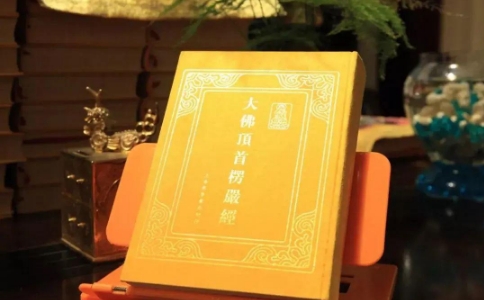
我个人学《法华经》有一段因缘,跟大家分享一下。我读佛学院的时候,其实我喜欢的是唯识学。我那个时候有听《法华经》,但是我最喜欢唯识。唯识的好处,它解释因果很清楚:这怎么回事?我今生没有造这个罪,为什么得这个果报?因为仓库里面有。
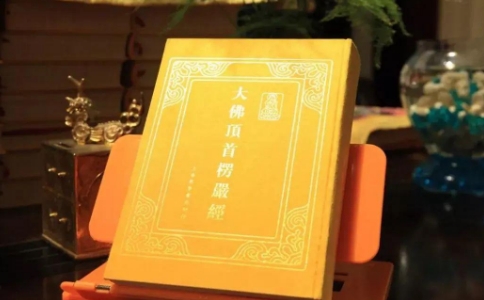
你要想学《楞严经》,放下识心,放下一切执著。就像一张白纸,原来什么都没有,你想怎么画就怎么画;如果你原来有些个形相,你画什么都画不成了。我们要学《楞严经》的时候,先把一些思虑、缘念——就是我们自己所有的一些想法——你都要放下,就像一张白纸似的无知。
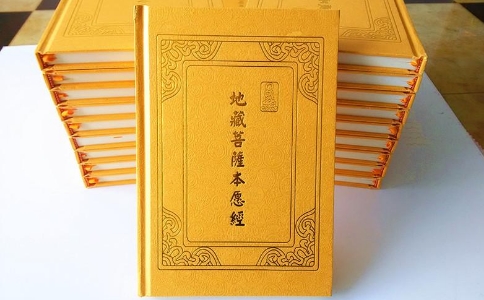
“檀”翻为中文是布施的意思,“六度”首先是布施、“尸罗”是持戒、“羼提”是忍辱、“毗离耶”是精进、禅定,最后第六度是般若。这六度是作为一个菩萨行成就佛果的六大科目,布施度悭贪、持戒度毁犯、精进度放逸、忍辱度嗔恨、禅定度散乱、智慧度愚痴。

居士问:师父,初学者读《地藏经》读第几品?我心里想读第九品的,读全文上班没时间,可以只读第九品吗?一如法师解答:《地藏经》是我们佛门的大孝之经,大乘的孝经,地藏菩萨是大乘的大孝之王,也是大愿之王,所以《地藏经》我们要多读。
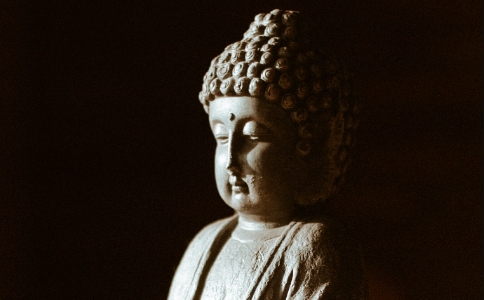
《地藏经》上说:只要在临终时听到佛名,就能得解脱。这句话看似简单,实则义理极其丰富。第一、能在临命终时,听闻到佛菩萨名的,都是福德因缘具足的人。有些老修行,到临命终时,反而业障现前,提不起佛号,甚至无缘听闻佛号,更何况平时不念佛的人,临命终时怎
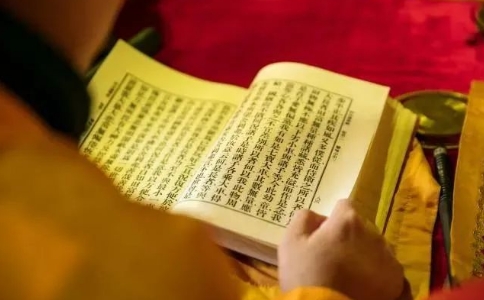
为什么读《地藏经》之前,要先读觉林菩萨偈颂?一切境界都是心变现的,无量地狱相是由心变化的。心变化的是没有的,但是一切众生受地狱苦,它又是实在的。那个实在是非有的,是心所变化的。谁心里又变化个地狱啊?那是你的心变化地狱,这种变化可多了。
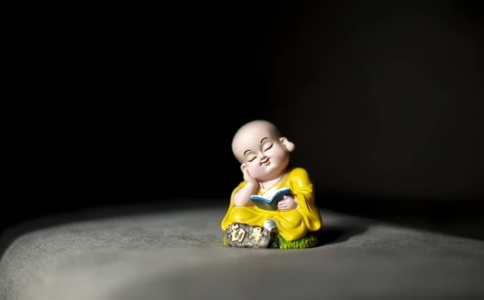
很多人因为在过去受到一些其它观念的影响——《地藏经》晚上不能念啊,念《地藏经》又出现这个那个、那个这个的现象啊,人很容易被暗示,这样一讲了,他马上就出现这种状态,所以说在念经的过程当中,就很容易出现那些幻觉。如果说有那么严重的问题出现,那佛陀首先在
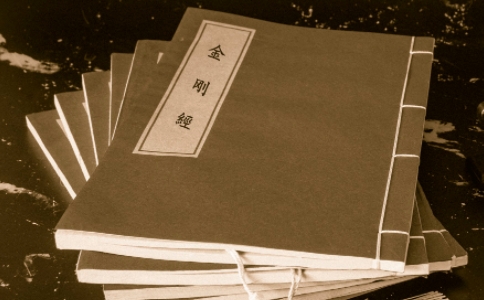
《金刚经》告诉我们的核心思想,其实就是什么?离相修行。前提是什么?你的知见不要搞成,《金刚经》讲一切都是梦幻泡影,是不是让我不修行?这是错误的。我们所有的修行都应该建立在离相的状态,而不是让你不修行。因为很多人就觉得,“师父,一切法都是梦幻泡影”,

《金刚经》的中心思想是:破除我执和法执。《金刚经》就是告诉我们,如何破除我执和法执,站在生死无常的角度去看待万物,就能用很智慧的方法去看待这个世界,这时内心升起的那种信念和过去完全不一样。看到自己身体,遇到各种事时,习惯以自我为中心思维。

“如来所说法,皆不可取、不可说,非法、非非法。”这里所谓不可取的意思,是说佛法都是一时对治的机宜方便,佛法就像药一样,众生有种种烦恼的病,应病与药,这个药就是法。病好了药就可以不用了。所以说病去则药除,不可执以为真实,都是暂时假借而用,不是究竟之法。
赞助、流通、见闻、随喜者、及皆悉回向尽法界、虚空界一切众生,依佛菩萨威德力、弘法功德力,普愿消除一切罪障,福慧具足,常得安乐,无绪病苦。欲行恶法,皆悉不成。所修善业,皆速成就。关闭一切诸恶趣门,开示人生涅槃正路。家门清吉,身心安康,先亡祖妣,历劫怨亲,俱蒙佛慈,获本妙心。兵戈永息,礼让兴行,人民安乐,天下太平。四恩总报,三有齐资,今生来世脱离一切外道天魔之缠缚,生生世世永离恶道,离一切苦得究竟乐,得遇佛菩萨、正法、清净善知识,临终无一切障碍而往生有缘之佛净土,同证究竟圆满之佛果。
版权归原影音公司所有,若侵犯你的权益,请通知我们,我们会及时删除侵权内容!